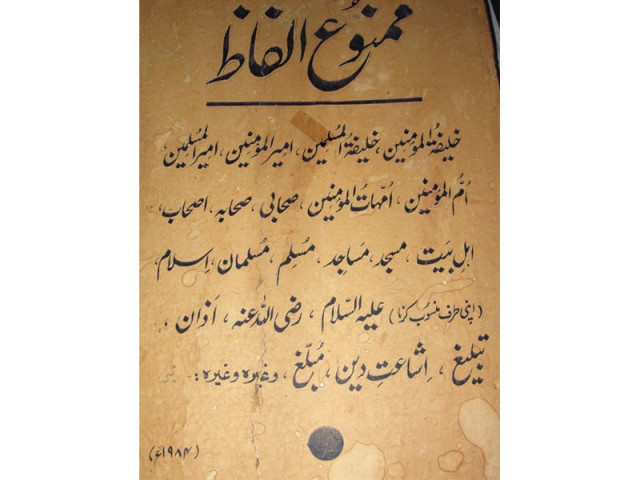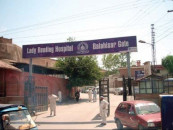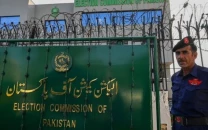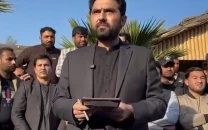Daily Alfazl: 98 years and counting
One of Pakistan’s oldest newspapers is thriving despite bans and lawsuits.

It is far from a conventional broadsheet. The Jamaat Ahmadiyya’s Daily Alfazl newspaper started off as a weekly in 1913. Almost a century later, the paper is still in circulation, despite the bans, threats and legal issues that followed the introduction of Ahmadi-specific laws.
At the newspaper’s office in Rabwah, in Chiniot District, the impact of those laws is tangible.
While proofers at other publications look for factual and grammatical errors, staffers at the Daily Alfazl have a different set of tasks. In 1984, a sign was placed in the proofers’ room, featuring a list of words the Daily Alfazl cannot use in line with the ‘Anti-Islamic Activities of the Qadiani Group, Lahori Group and Ahmadis (Prohibition and Punishment) Ordinance’, which was promulgated that year. Intriguingly, editors replace the words they cannot use with dots, leaving readers to figure out what was redacted from the original text. The prohibited words include ‘Muslim’, ‘Azaan’ and ‘Tabligh’.
At one point, according to editor Abdul Sami Khan, there were over a hundred lawsuits against the paper’s printer and publisher. And even though the Daily Alfazl is only circulated within the Ahmadiyya community, ‘objections’ have been raised by people incensed at the mere sight of its masthead. It has been banned several times, and its printing press was sealed for a year in 1953, during riots against the Ahmadi community. Shipments of the paper are often delayed at the post office.
This isn’t the only publication people have been ‘offended’ by. “People have had issues with the children’s magazine as well,” says Khan. According to the Ahmadi watchdog website, www.thepersecution.org, cases have been instituted against five monthly magazines and the newspaper itself, as well as books published by the community. The Daily Alfazl also receives no government advertisements, a key source of revenue for most publications.
“We used to get advertisements before 1974 [the year amendments declaring Ahmadis non-Muslims were introduced in the constitution],” says Khan. “Not anymore.” Instead, the newspaper runs ads from local advertisers or large businesses run by members of the community.
The slim newspaper — which publishes 9,000 copies daily — is primarily a journal for the community, featuring sermons and local news. A weekly edition is published in the UK.
But were Daily Alfazl tasked with refuting the allegations made against the Ahmadiyya community in the local press, it would have to produce at least a 40-page edition daily. Coverage of the community in the mainstream Urdu press mostly ranges from vitriolic diatribes to headlines that can only be described as bizarre — and at least one such headline is recycled every year without fail. According to an official at the Jamaat Ahmadiyya press section, a story alleging that Ahmadis had enlisted in the Israeli army has been doing the rounds for several years. “When the story was first published, the government of Pakistan issued a clarification to say that no Pakistanis were serving in the Israeli army,” he said. “But that story is reprinted every year regardless.”
The Jamaat Ahmadiyya also maintains a record of anti-Ahmadi stories published in newspapers printed from Lahore. In 2010, it recorded 1,468 news stories against the community, the majority of which were in seven of the most popular Urdu newspapers in the country.
That’s not all. Pakistani newspapers also refused to run a paid-for advertisement by the Jamaat which detailed its reasons for boycotting the 2008 general elections.
Ironically, the Pakistani media has unwittingly promoted the Ahmadiyya community’s places of worship, which cannot be called mosques for legal reasons. In 2009, as furore built up over a referendum in Switzerland to ban minarets, images of a mosque in the European country were published throughout Pakistan. Editors would be shocked to realise that the Swiss mosque being defended in the Pakistani press actually belongs to the same community they prefer to vilify.
Before leaving Rabwah, my copies of the Daily Alfazl and books are wrapped up in brown paper to evade scrutiny. Or, as a Jamaat representative wryly remarks, blasphemy charges. While I only have to hide the publications for a few hours, for the editors and readers of the Daily Alfazl, this is a daily battle — one that shows no signs of ending anytime soon.
Published in The Express Tribune, Sunday Magazine, October 9th, 2011.
















COMMENTS
Comments are moderated and generally will be posted if they are on-topic and not abusive.
For more information, please see our Comments FAQ